In October 2018, when I was travelling from the airport in Malmö, Sweden, to Copenhagen, Denmark, I saw a road sign showing the direction of the city of Lund. It is completely unclear to me why at that moment something lit inside my brain telling me that Lund is a very well known place that is worth a visit. Later it turned out that Lund is generally not that much well known place. Admittedly, it is the second oldest university centre in Sweden after Uppsala, but that was certainly not a reason that would mean that much to me. The advocates of reincarnation would definitely first suspect that this is all about some previous life I had in Lund, but since I don’t remember any of it in my present life, when I had free consecutive 3-4 days I simply bought a plane ticket to Malmö and booked a room in Lund. After all, any excuse is good to make one go on a trip.
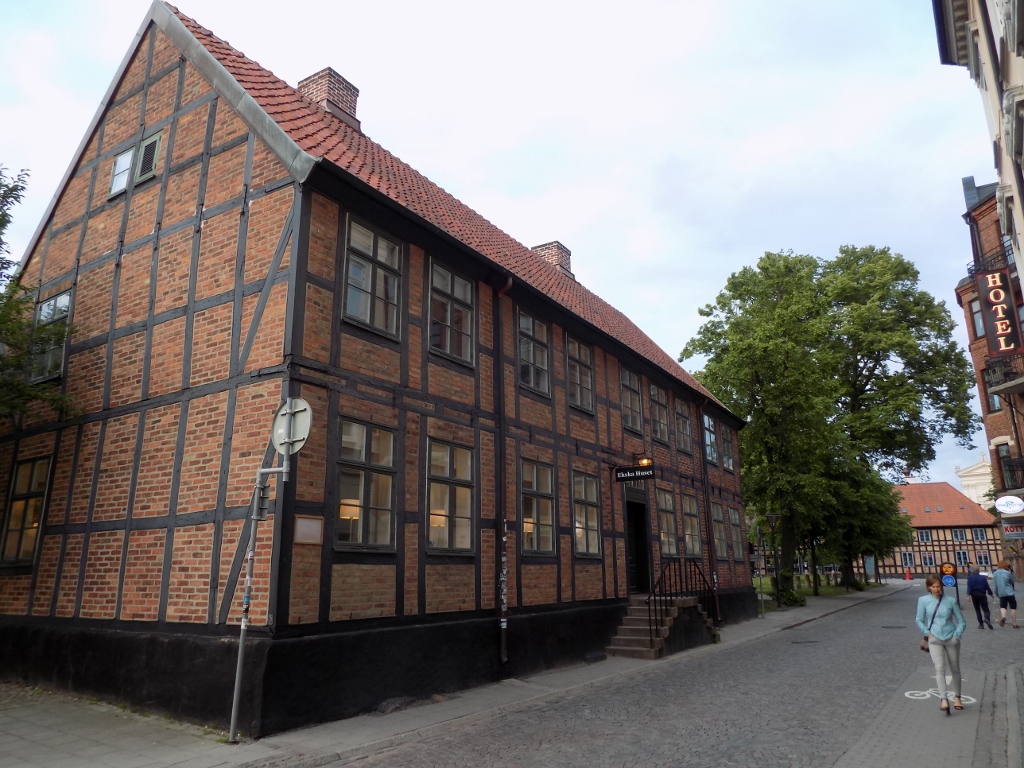 One of the central streets in Lund
One of the central streets in Lund
Before my trip I also consulted some of my guidebooks and thus I came up with a packed-up itinerary that I found quite interesting. The time was limited and I thought I’d better use it well.
To start with, at the Malmö airport I caught a bus that then took me to the railway station in Lund and from there to the flat in which I had booked a room there was less than 10 minutes on foot. This was not the first time I had booked a room within a private flat. The first time I did it was when I went to Nuremberg, Germany, in 2017 and then again in Genoa, Italy, in 2018. And both times it was a wonderful choice. That’s why I did not hesitate in the least when I booked my accommodation this time and in the end I had no regrets about it again. The flat, that is, my room within it, was in the very centre of the town and while I was pulling my travel bag, I was enjoying the beauty of the town and its half-timber houses.
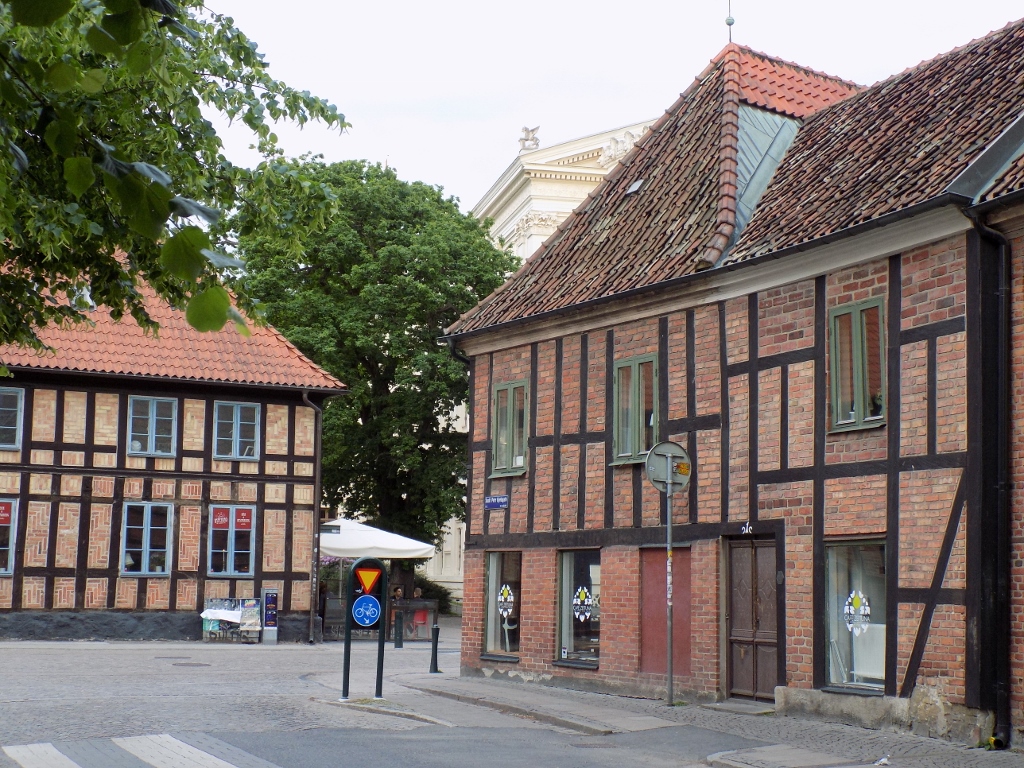 Scenes from the centre of Lund
Scenes from the centre of Lund
As I had an evening flight from Belgrade to Malmö, which was in addition a little late, I did not go out that evening, but rather opted to go to bed earlier and to have a good rest since the days before the trip were filled with a lot of running around and I actually did need some vacation.
For the next day, the forecast announced unstable weather with a possibility of rain, so I decided first to go to the place which was in my plans most distant from Lund, concretely almost two and a half hours by train. I was thinking that if there should be rain, it would be good that I spend most of that time on the train and visit only one place. I’m saying this, since on the following day I planned to visit three different places and that also entailed more time outside. But, to start with, on that first day I took a train to the town of Karlskrona on the east coast of south Sweden.
It seems to be that Karlskrona is not a spectacularly well-known place, but it is interesting that it may be found in the UNESCO’s World Heritage List. The reason for this is that this is the best and most completely preserved naval town in Europe.
The town was founded in the summer of 1680 (while its shipyard was founded even one year earlier) in order to help the Swedes, as a port, in their very problematic relations with the Danes at the time by making sure that their naval fleet would not be entrapped by ice during winters as the case was when their ships were anchored in Stockholm. The newly-founded town was named after the then ruler of Sweden, King Charles XI, and it means Charles's Crown.
Nowadays Karlskrona spreads across 30 islands that constitute the eastern part of Blekinge archipelago, while the main island in the town is Trossö.
So, what makes the town interesting is that to the present times it has kept the same structure of the streets that were created when the town was first founded, i.e., in terms of urbanism everything is literally unchanged. This perfect state of preservation is partially a consequence of the fact that no battles or wars were fought here. On the other hand, this is not some pacifistic commune, but rather there is an active naval base here even today.
Needless to say, I am not particularly interested in naval ports and even the urban arrangements, but I do have this proneness to check the World Heritage List maintained by UNESCO and then I find it interesting to visit places that are included into this list. I have already explained my reasons for this in one of the short introductory texts on my travel blog, so who is interested may click on the following link and read about them (https://www.svudapodji.com/en/unescos-world-heritage-list/).
So, when I got to Karlskrona and headed for the centre, I was greeted by rain. However, while I walked there, the rain not only did not show any signs of letting up, but actually gained in its intensity. Although I was physically ready for the event, I had the shoes and the jacket suitable for rain, as well as an umbrella, I still decided first to go to a couple of shops until I prepared psychologically for a rainy day.
Soon after I also went to the main city square that was being partially renovated, but not any less impressive on that account. Namely, Stortorget (meaning Grand Square) in Karlskrona is the biggest square in all of Scandinavia – it covers the area of over two hectares!
First I got to Fredrikskyrkan Church, so I entered it in order to see it from within. I actually came across an organ concert, while a man at the entrance kept inviting anyone who showed up at the church door, encouraging them to enter, take a seat and listen. Thus I sat for a little while, after all there was rain outside, but the concert was actually already at its end, so I did not stay there for too long.
When I got out, the rain did abate a little, while I was relatively confused, since I had the information about what was interesting to be seen in the city, but no map. Not knowing quite how to orient myself and I could not see any tourist office, I came across a small tourist train which was not expensive at all and which, as it turned out, was an excellent way for me to get my bearings about the main sightseeing points in the city. Also, the driver was kind enough to show me where the tourist office was, so after that pleasant half-an-hour ride, during which the rain had stopped, I went to the office and there I finally got a map to orient myself better.
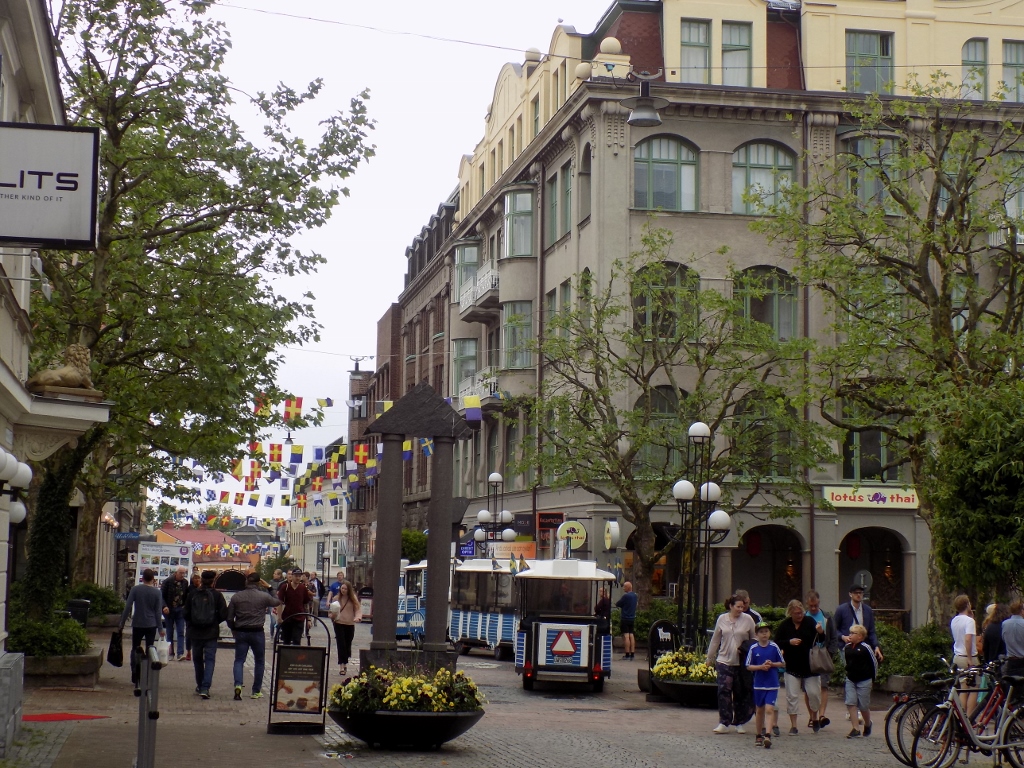 Pedestrian street and the tourist train in Karlskrona
Pedestrian street and the tourist train in Karlskrona
As I was getting out into the street, it poured again and I just sat down in the first café I came across where I had a nice coffee that also warmed me up a little, while I used the wireless internet to check what was happening in the world lest I missed out on something. I may have stayed there for half an hour and when I went out I was greeted by the Sun and blue sky. It did not rain any longer, although it got cloudy again in the afternoon, and after the rain had ceased the temperature went up sufficiently for me to take off not only my jacket, but also the thin jumper which I had fortunately taken along with me. What I want to say is that the weather was very changeable in all directions and with all of its elements.
But now, supplied with information, as well as a map, and taking into account it was dry, partially sunny and comparatively warm, I was completely ready to start with my sightseeing, so I went to the centre of Stortorget again where I then turned around and took photos.
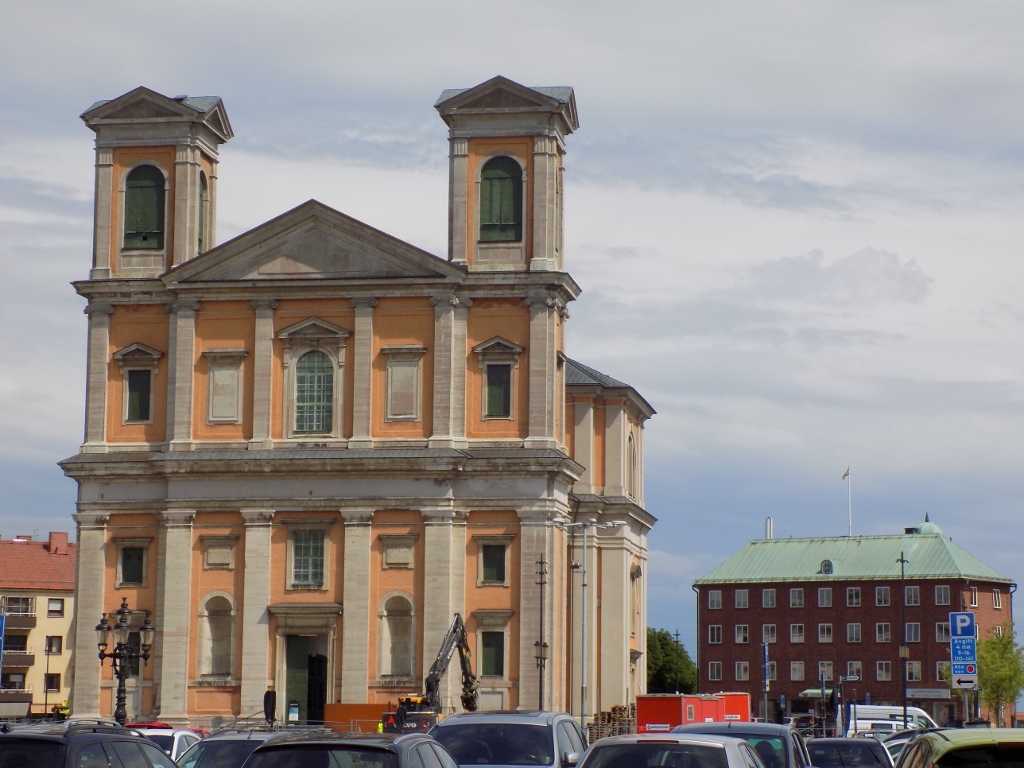 Fredrikskyrkan Church
Fredrikskyrkan Church
Fredrikskyrkan Church in which I had already been and listened to an organ concert for a short while was built at the beginning of the 18th century and it was consecrated in 1744. What makes it interesting is that it differs from the usual style of the churches in Sweden, since its architect was under a great influence of the Italian architecture and this may be seen quite clearly.
In the square, there is also the City Hall, a monument to Charles XI, as well as the Church of the Holy Trinity, also called the German Church since it was built at the beginning of the 18th century for the population that spoke German. This church too was designed under a strong influence of the Italian architecture.
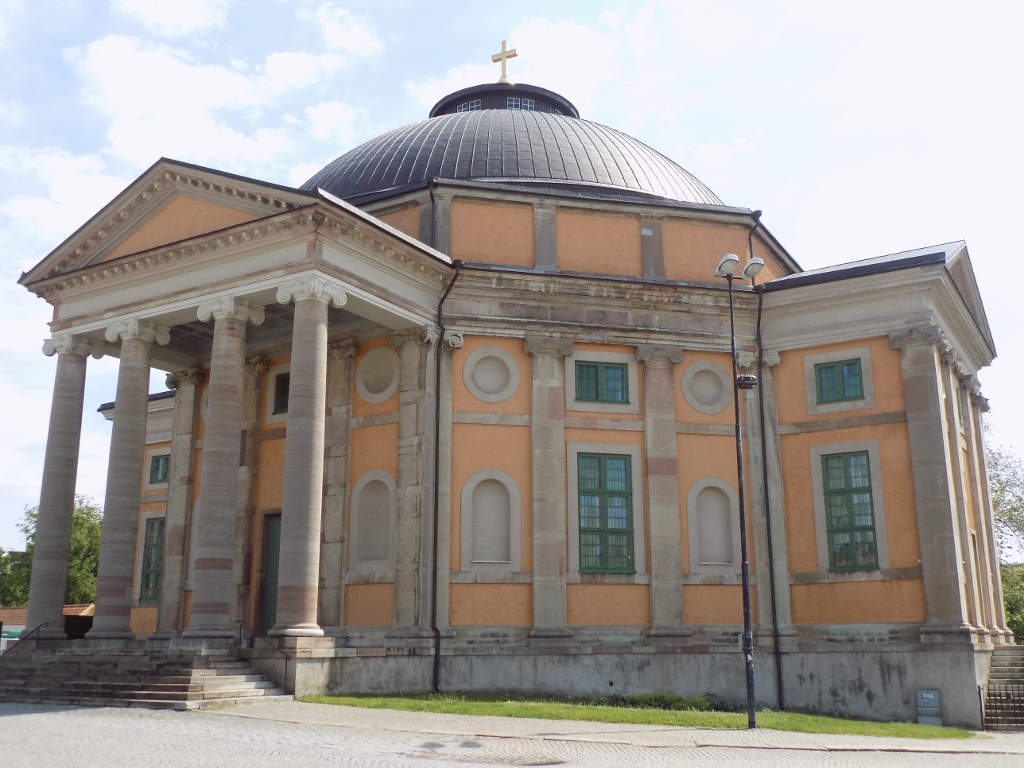 Church of the Holy Trinity
Church of the Holy Trinity
When I entered the Church of the Holy Trinity, there was christening going on. I was exceptionally content that I had an opportunity to attend the rite. On the one hand, the priest was actually a priestess and I think this was the first time I had ever attended a Christian service led by a woman. The other interesting aspect was that a young woman sang something all the time looking at the baby held by a man (it was probably a godfather). I must admit that occasionally the song sounded as if it were a Swedish candidate for the Eurovision Song Contest back in the 1980’s, but my sardonic comment made in the privacy of my head did not in any way diminish the actual beauty of the moment and the wonderful voice of that woman. After the song, she stood in the centre, next to a man who was not holding the baby, and there was also a small girl there as well, so I concluded that this was in fact the mother of the baby, which only made the whole event and the relatively unusual christening ritual that much more beautiful.
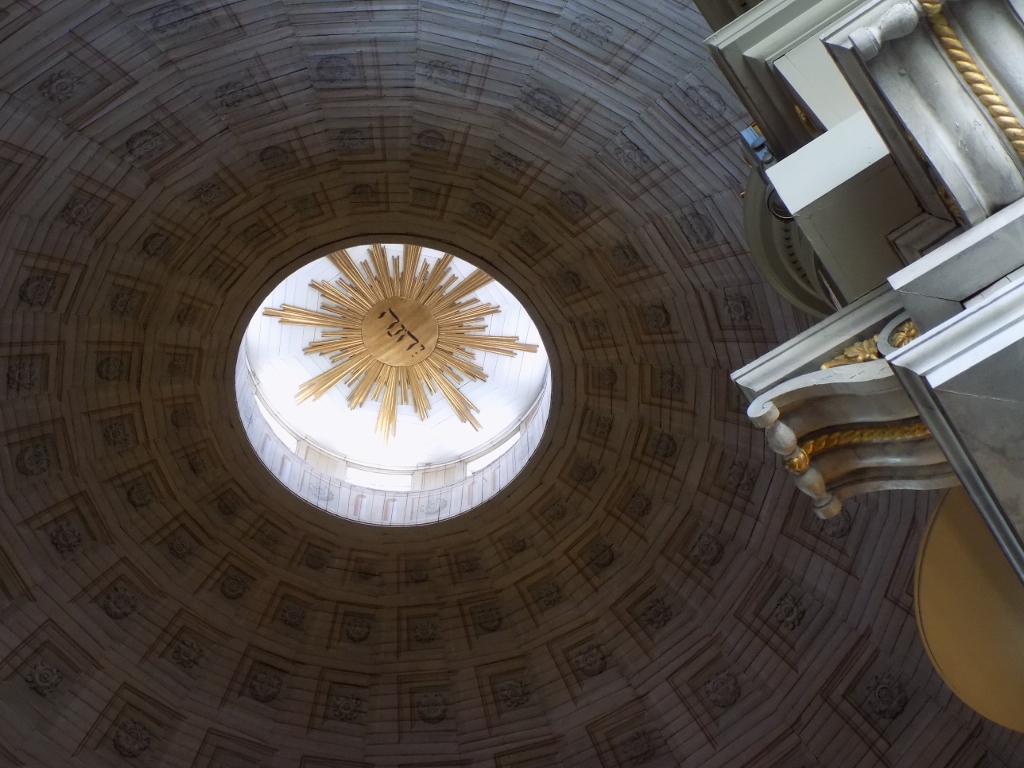 Church of the Holy Trinity, look at the top of the dome
Church of the Holy Trinity, look at the top of the dome
Then I headed for Stumholmen, one of some 30 islands over which Karlskrona spreads. By the way, the railway station, as well as the main square and everything I had visited until that point are located on the main, i.e., the central island of Karlskrona – Trossö, which is connected by a bridge to a significantly smaller island of Stumholmen.
Here I made a fine circle and first walked towards the Naval Museum, with no intention to visit the museum itself, but beside the museum building I could still see a part of the exhibit which consists of a few of ships.
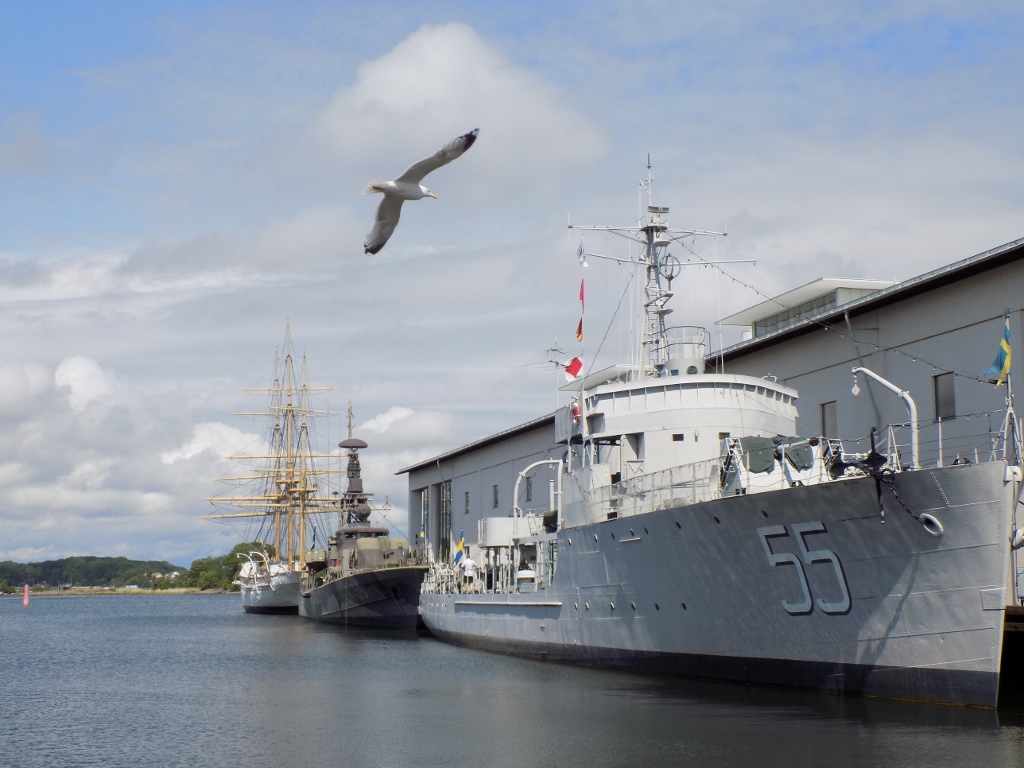 Naval Museum, a part of the exhibit
Naval Museum, a part of the exhibit
On this island, there is one of the several bastions that constitute a part of the complex fortifications built almost throughout the entire archipelago. As I’ve said, nowadays there is a fully active Swedish naval base here and some parts are available to the public, while some are off-limits. Thus, for instance, on the island of Tjurkö there is the Kungsholms Fort that has a very interesting, completely circular walled-up port. This fort was not accessible to the public in the past, but now it can be visited although only within the scope of organised sightseeing tours. I did not have the time for this, but from the shore near the Kungshall Bastion I had a nice view at yet another part of the fortification, the Tower of Godnatt, meaning Good night, which appears to rise from the sea itself.
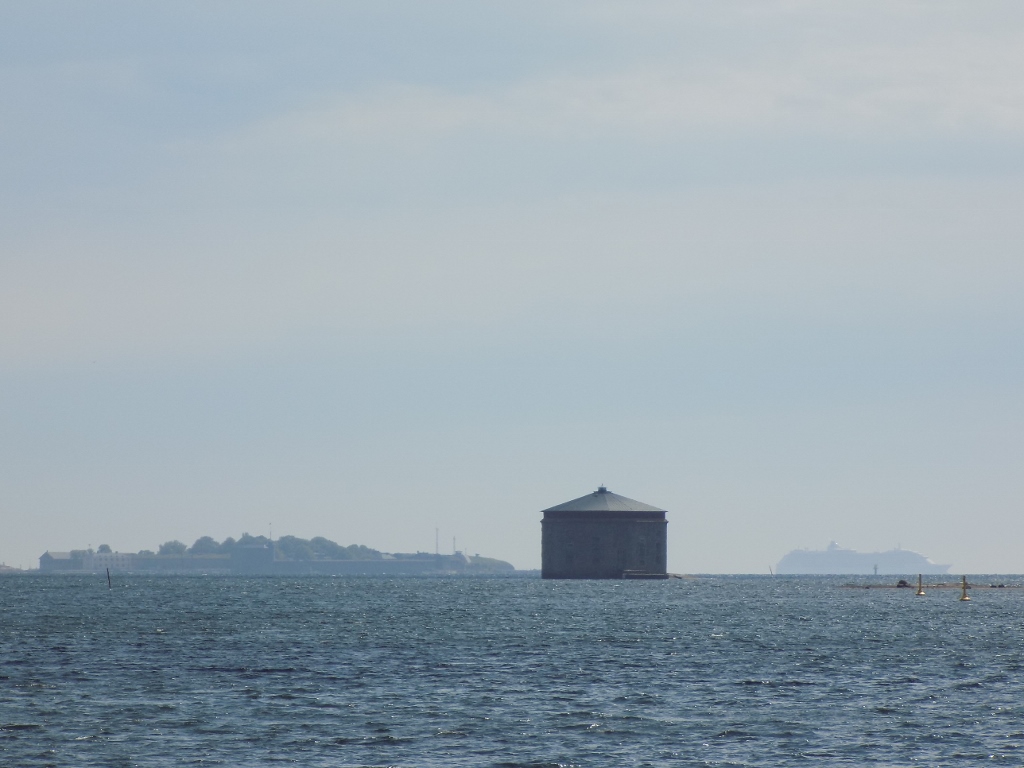 Godnatt Tower
Godnatt Tower
The Kungshall Bastion was certainly easily accessible, but I did not find it too interesting and only walked past it making a circle around the island only to go back to the main island of Trossö from where there is a fine view at the island of Stumholmen, its lighthouse and the Kungshall Bastion.
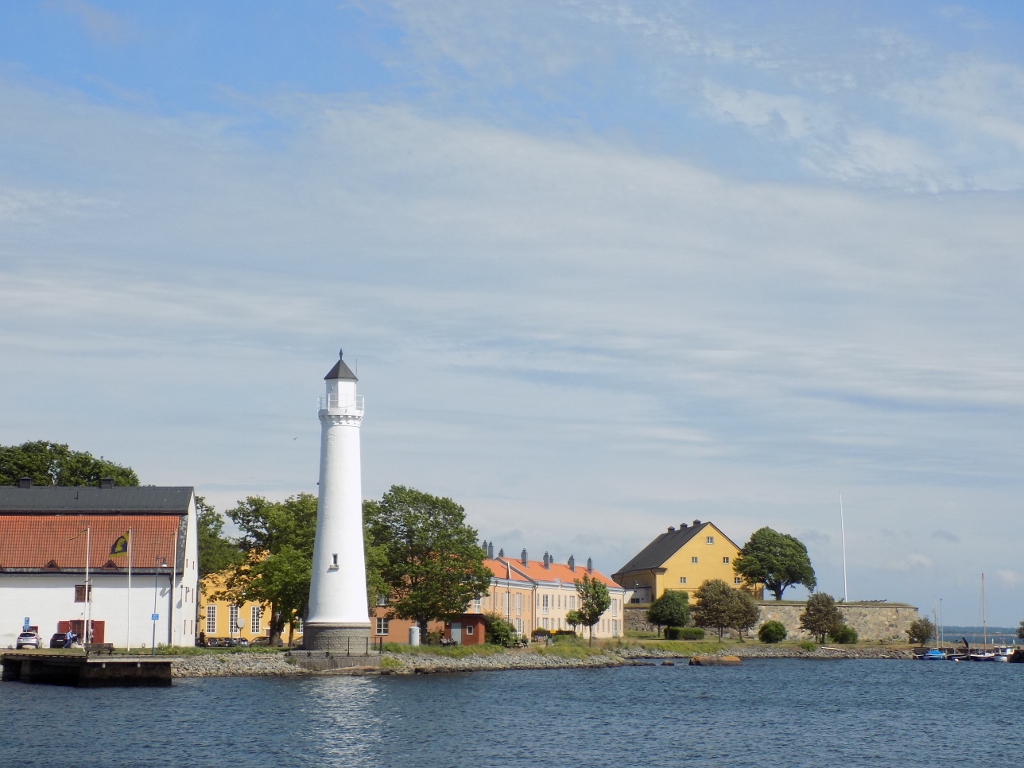 Stumholmen island; the lighthouse and the Kungshall Bastion which is on the far right-hand side
Stumholmen island; the lighthouse and the Kungshall Bastion which is on the far right-hand side
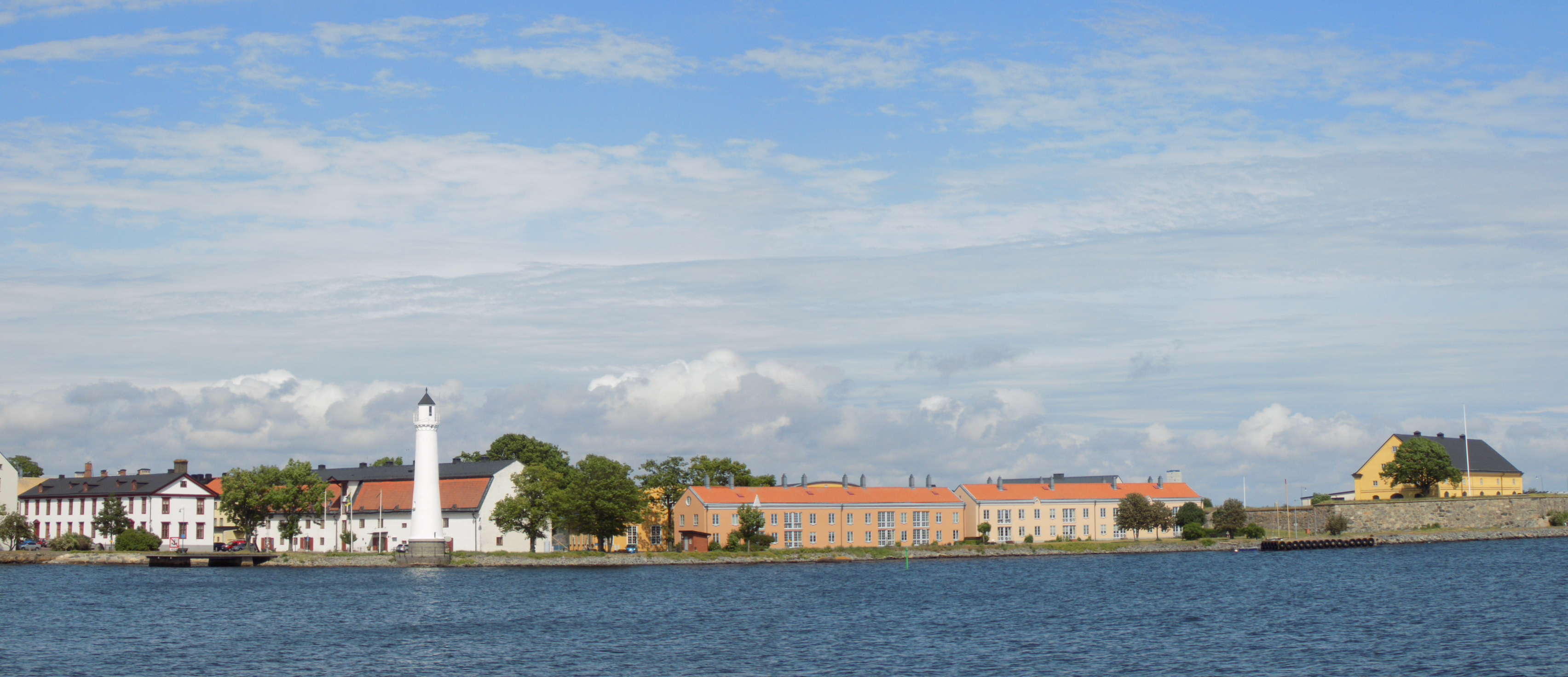
There I continued with my stroll beside the Aurora Bastion that was built at the beginning of the 18th century, but in addition to these facilities that used to have or that still have a military function, there is a myriad of other pretty buildings in Karlskrona as well.
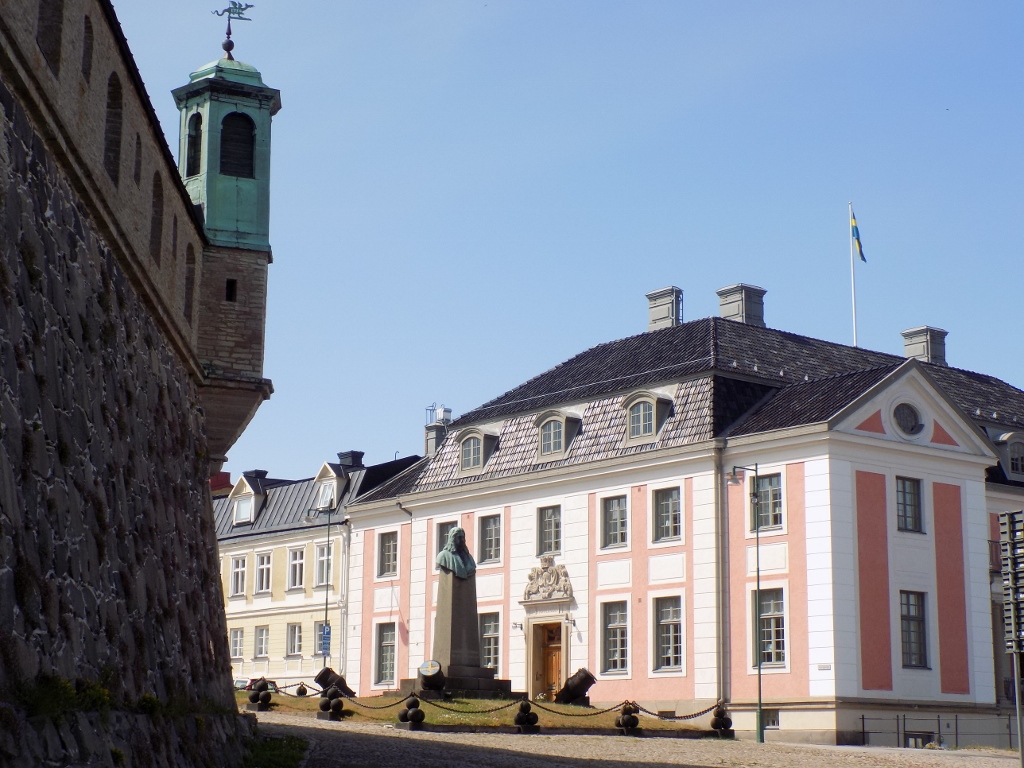 A part of the Aurora Bastion is to the left
A part of the Aurora Bastion is to the left
Not so far, there is also the Karlskrona Admiralty Church that was consecrated in 1685 and that is one of the biggest wood churches in Sweden.
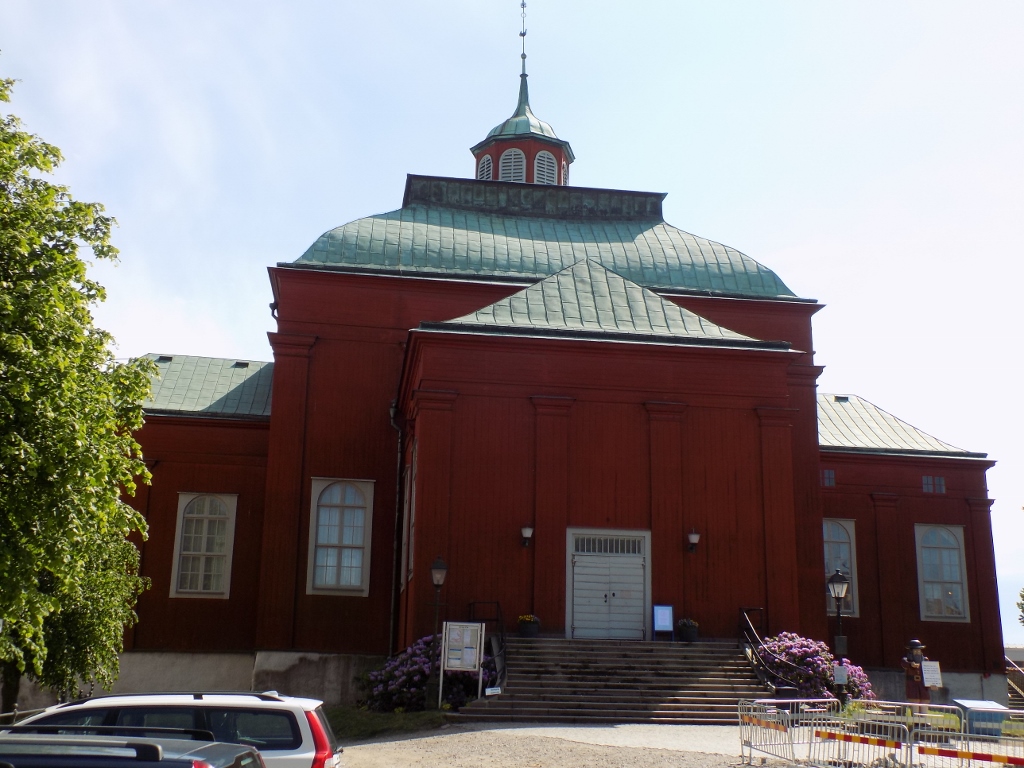 Karlskrona Admiralty Church
Karlskrona Admiralty Church
Unfortunately, when I got to it, it was closed on account of the preparations for a wedding and I did not really feel like waiting, so I continued with my sightseeing of the city, but before that I also looked more closely at Rosenbom.
This is in fact a wooden figure of Old Man Rosenbom that stands in front of the church. Admittedly, since the middle of the 20th century, the original figure has been placed in the church itself, while a copy stands in front of it. This wooden figure constitutes in fact a box for donating charity for the poor. One needs to climb the few steps, lift the hat of Old Man Rosenbom and give the contribution.
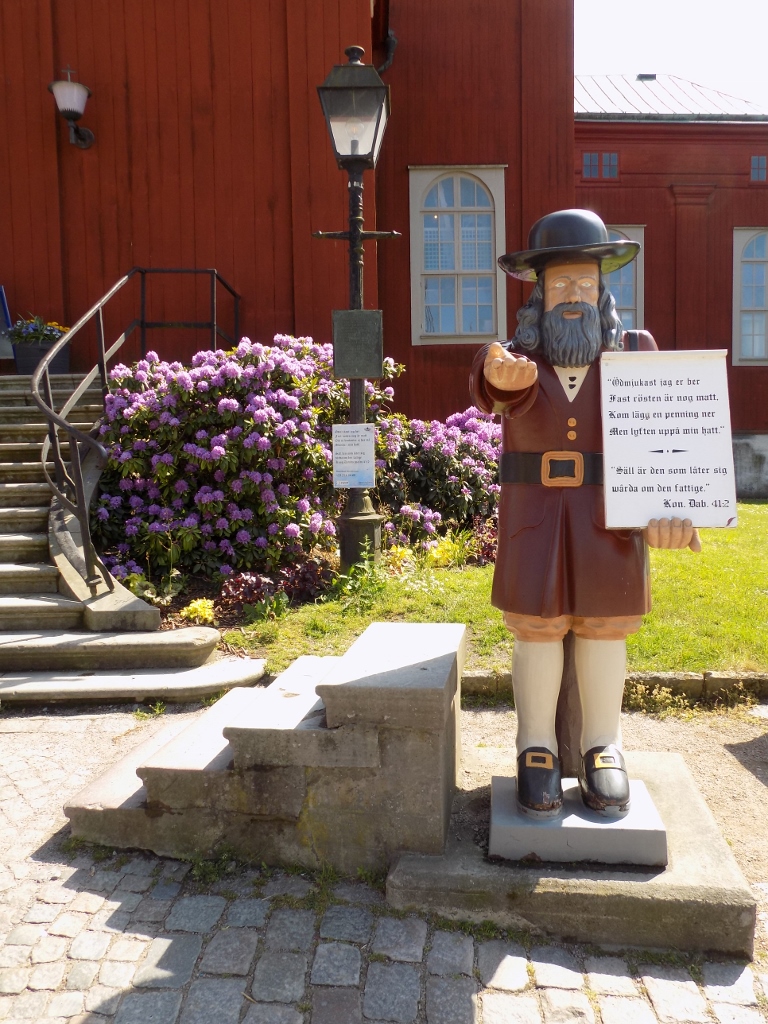 Old Man Rosenbom
Old Man Rosenbom
This character, however, is additionally famous in Sweden since it is mentioned in their well-known children’s novel – “The Wonderful Adventures of Nils (Holgersson).”
After this, I headed towards the west side of the island, passing along the way through a park on a small elevation in which there is also a tower that formally belongs to the church, although it is rather far away from it. This is the Admiralstorn Tower built in 1699. It was originally used in order to show the exact time to the shipyard workers, but since the beginning of the 20th century it’s been used as the tower of the relevant church.
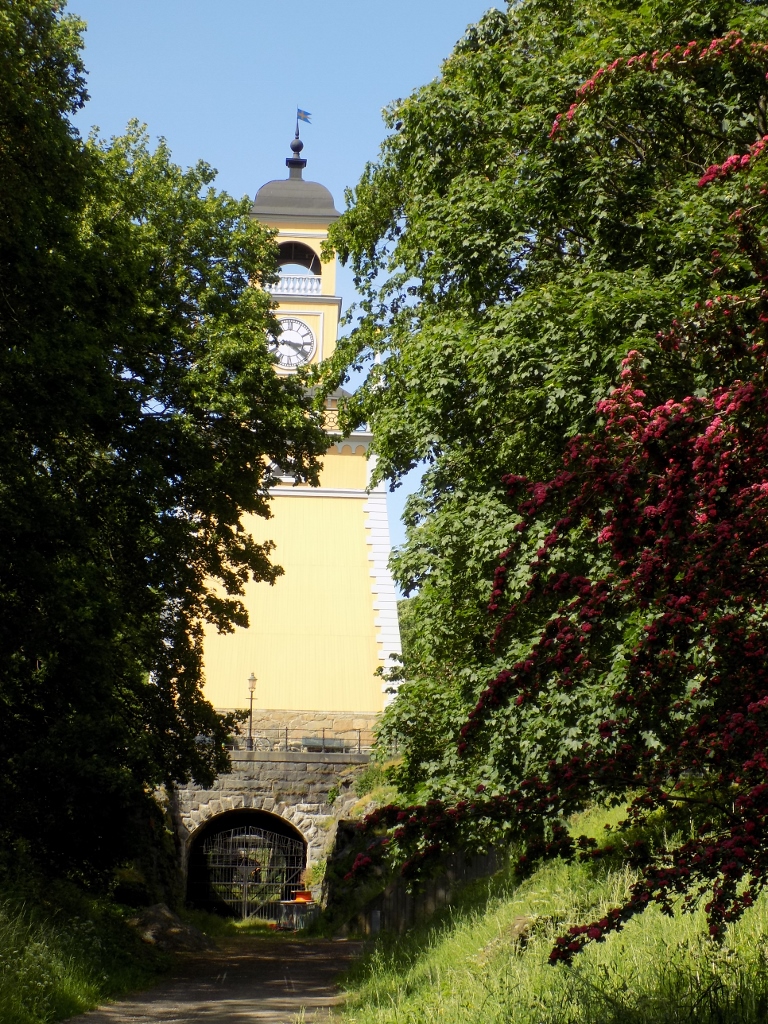 Admiralstorn Tower; under the tower there is a tunnel and a path that were used in the past to deliver the supplies to the base
Admiralstorn Tower; under the tower there is a tunnel and a path that were used in the past to deliver the supplies to the base
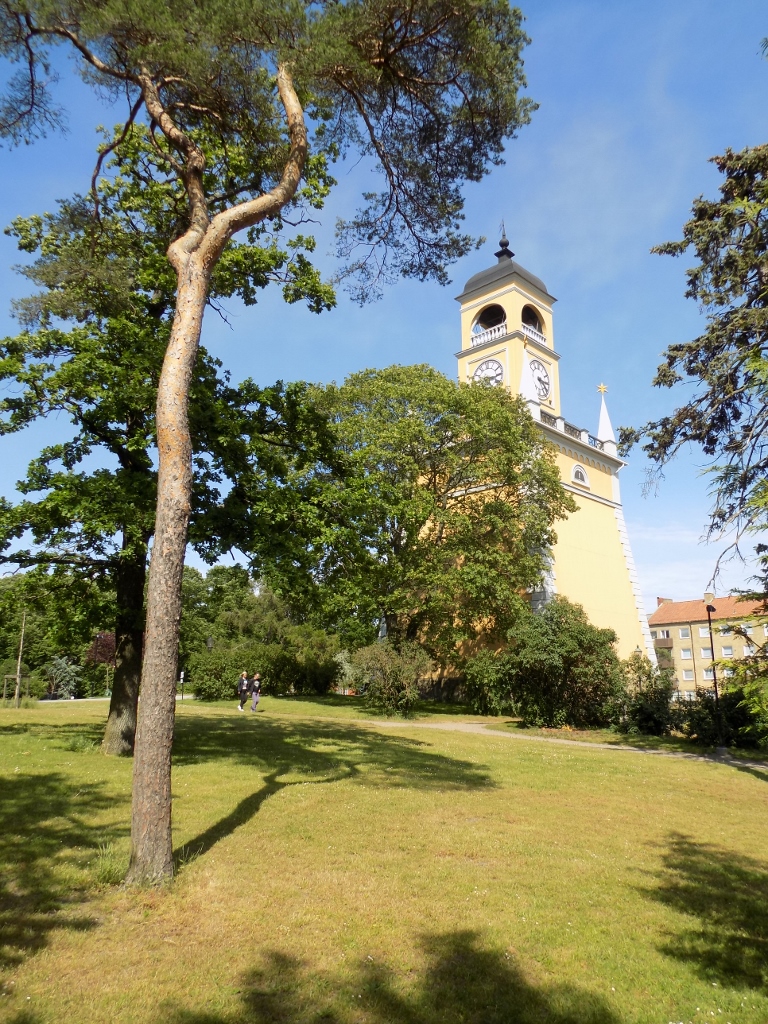 Admiralstorn Tower on the hilltop
Admiralstorn Tower on the hilltop
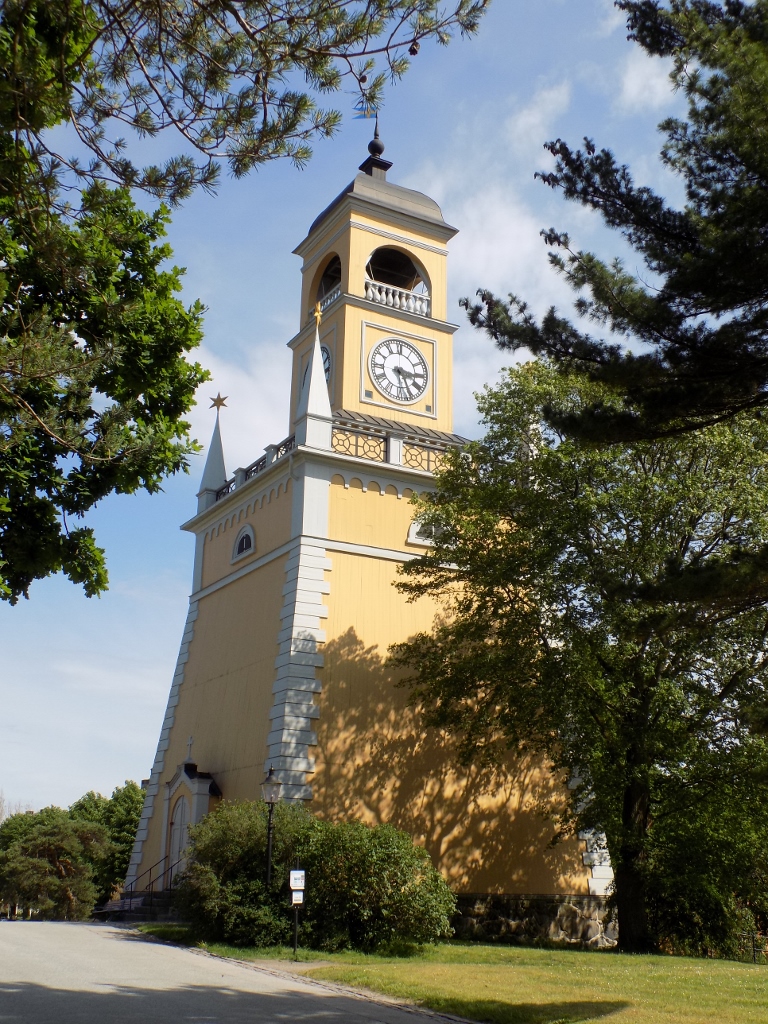 Admiralstorn Tower
Admiralstorn Tower